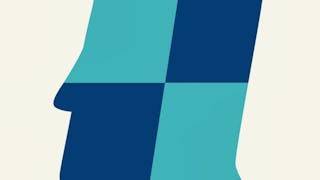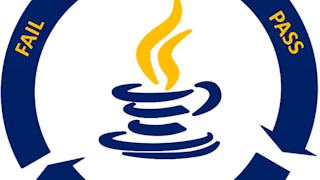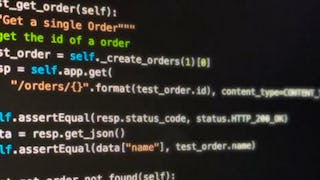To deliver agile outcomes, you have to do more than implement agile processes- you have to create focus around what matters to your user and constantly test your ideas. This is easier said than done, but most of today’s high-functioning innovators have a strong culture of experimentation.


Hypothesis-Driven Development
This course is part of multiple programs.

Instructor: Alex Cowan
56,786 already enrolled
Included with
(1,013 reviews)
What you'll learn
How to drive valuable outcomes for your user and reduce waste for your team by diagnosing and prioritizing what you need to know about them
How to focus your practice of agile by pairing qualitative and quantitative analytics
How to do just enough research when you need it by running design sprints
How to accelerate value delivery by investing in your product pipeline
Skills you'll gain
Details to know

Add to your LinkedIn profile
See how employees at top companies are mastering in-demand skills

Build your subject-matter expertise
- Learn new concepts from industry experts
- Gain a foundational understanding of a subject or tool
- Develop job-relevant skills with hands-on projects
- Earn a shareable career certificate

There are 4 modules in this course
How do you go from backlog grooming to blockbuster results with agile? Hypothesis-driven decisions. Specifically, you need to shift your teammates focus from their natural tendency to focus on their own output to focusing out user outcomes. Easier said than done, but getting everyone excited about results of an experiment is one of the most reliable ways to get there. This week, we’ll focus on how you get started in a practical way.
What's included
22 videos1 reading1 assignment
Nothing will help a team deliver better outcomes like making sure they’re building something the user values. This might sound simple or obvious, but I think after this week it’s likely you’ll find opportunities to help improve your team’s focus by testing ideas more definitively before you invest in developing software. In this module, you’ll learn how to make concept testing an integral part of your product pipeline. We’ll continue to apply methods from Lean Startup, looking at how they pair with agile. We’ll look at how high-functioning teams design and run situation-appropriate experiments to test ideas, and how that works before the fact (when you’re testing an idea) and after the fact (when you’re testing the value of software you’ve released).
What's included
20 videos1 assignment1 discussion prompt
The best products are tested for usability early and often, avoiding the destructive stress and uncertainty of a "big unveil." In this module, you’ll learn how to diagnose, design and execute phase-appropriate user testing. The tools you’ll learn to use here (a test plan template, prototyping tool, and test session infrastructure) are accessible/teachable to anyone on your team. And that’s a very good thing -- often products are released with poor usability because there "wasn’t enough time" to test it. With these techniques, you’ll be able to test early and often, reinforcing your culture of experimentation.
What's included
19 videos1 assignment1 discussion prompt
You’ve learned how to test ideas and usability to reduce the amount of software your team needs to build and to focus its execution. Now you’re going to learn how high-functioning teams approach testing of the software itself. The practice of continuous delivery and the closely related Devops movement are changing the way we build and release software. It wasn’t that long ago where 2-3 releases a year was considered standard. Now, Amazon, for example, releases code every 11.6 seconds. This week, we’ll look at the delivery pipeline and step through what successful practitioners do at each stage and how you can diagnose and apply the practices that will improve your implementation of agile.
What's included
25 videos1 assignment1 peer review
Earn a career certificate
Add this credential to your LinkedIn profile, resume, or CV. Share it on social media and in your performance review.
Instructor

Offered by
Explore more from Design and Product
 Status: Free Trial
Status: Free TrialUniversity of Colorado Boulder
 Status: Free Trial
Status: Free TrialUniversity of Virginia
 Status: Free Trial
Status: Free TrialLearnQuest
 Status: Free Trial
Status: Free Trial
Why people choose Coursera for their career




Learner reviews
1,013 reviews
- 5 stars
77.33%
- 4 stars
16.55%
- 3 stars
4.23%
- 2 stars
1.47%
- 1 star
0.39%
Showing 3 of 1013
Reviewed on Sep 24, 2018
This course actually bring all that knowledge into light which has been taught in Course 1-3. all videos specially the interview are the essence of this course.
Reviewed on Jan 8, 2022
I loved the whole specialization has a lot of benefits about product management from A to Z and especially this course was discussing every point in more detail for the whole specialization.
Reviewed on Mar 17, 2018
The course contains complete detailed information on Agile Testing. Users should make the best use of this course knowledge as now all the companies are now moving to Agile.

Open new doors with Coursera Plus
Unlimited access to 10,000+ world-class courses, hands-on projects, and job-ready certificate programs - all included in your subscription
Advance your career with an online degree
Earn a degree from world-class universities - 100% online
Join over 3,400 global companies that choose Coursera for Business
Upskill your employees to excel in the digital economy
Frequently asked questions
Once you have earned your certificate, you can share your course certificate on LinkedIn. You can showcase the issuing university (rather than Coursera) on your LinkedIn profile page. To do so, log into LinkedIn and scroll down to your accomplishments. Click on “certification” and edit it by clicking on the pencil. Then under “Certification authority” add University of Virginia Darden School of Business and the UVA Darden icon should pop up. Your certificate will now display this icon.
To access the course materials, assignments and to earn a Certificate, you will need to purchase the Certificate experience when you enroll in a course. You can try a Free Trial instead, or apply for Financial Aid. The course may offer 'Full Course, No Certificate' instead. This option lets you see all course materials, submit required assessments, and get a final grade. This also means that you will not be able to purchase a Certificate experience.
When you enroll in the course, you get access to all of the courses in the Specialization, and you earn a certificate when you complete the work. Your electronic Certificate will be added to your Accomplishments page - from there, you can print your Certificate or add it to your LinkedIn profile.
More questions
Financial aid available,
¹ Some assignments in this course are AI-graded. For these assignments, your data will be used in accordance with Coursera's Privacy Notice.

